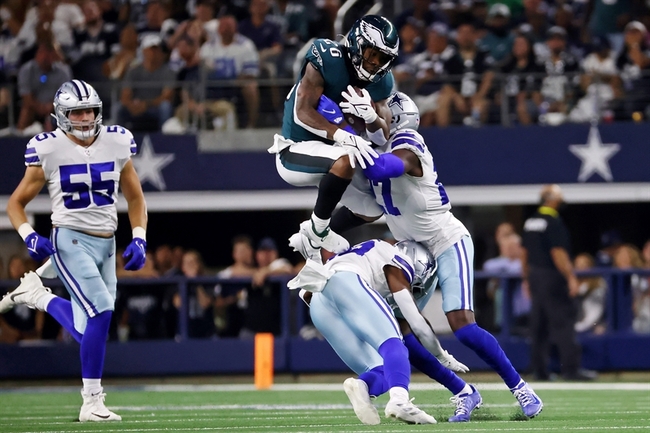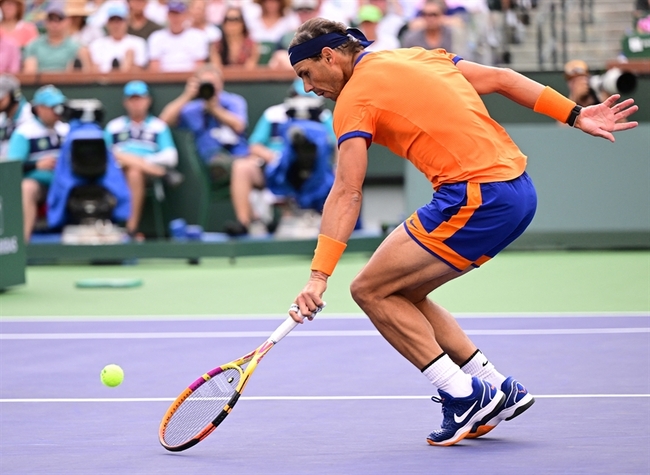You are viewing 1 of your 1 free articles
Demands of Sport: Part III - Hold your forces: contextualizing data for return to sport decision-making

Introduction
In the world of Sport and Exercise Medicine (SEM), numerous technological devices can provide comparative, objective measures to track athletes’ performance or injury rehabilitation progress, thereby guiding clinical decision-making. However, the accuracy of clinicians’ data interpretation and subsequent recommendations depends on their understanding of several aspects related to the devices and tests.Practitioners use force plates to measure forces during the execution of specific athletic activities such as running or jumping(1). For example, an interlimb comparison can be useful, but there are several notable aspects to consider when utilizing force plates to assess post-injury tissue capacity.
Dynamic Correspondence
Dynamic correspondence is an exercise or training program’s ability to influence an athletes’ sporting performance directly(3). However, practitioners can extend this term to assessing athletes, i.e., how a test’s results and subsequent interventions relate to the specific physical demands of an athlete’s sport.Practitioners assess jumping performance to guide rehabilitation progression and return to sport (RTS) decisions. It is common for athletes to present with interlimb countermovement jump (CMJ) performance differences following injury(2). However, the relationship between bilateral or unilateral CMJ performance and prospective injury or re-injury is scarce. While methodological and statistical research barriers contribute to this scarcity, practitioners should consider the tests’ dynamic correspondence. Therefore, when using test data to make inferences about athletes’ rehabilitation progress, practitioners must consider the transferability of the intervention to sports-specific performance.
Do force plates only measure force?
Like bathroom scales, force plates contain load cells that can only measure force at high sampling rates. Therefore, force plate recordings are a data array of possibly biased, discrete force values originating from an analog-to-digital converter(4). Dedicated software then uses algorithms based on the laws of physics and numerical integration to derive other variables, including acceleration, power, velocity, rate of force development, and displacement(1,4). However, these calculations and numerical integrations assume specific test conditions. Inconsistencies in assumptions and conditions (e.g., testing protocols) can influence the magnitude of the derived variables and time curves. For example, one of the methods used to calculate jump height depends on the flight-time and then applies the kinematic equations for one-dimensional motion under constant acceleration(1). However, athletes may manipulate the fight-time by tucking the knees to the chest or dorsiflexing the ankles during flight (see figure 1). Subsequently, the displacement calculation may be inaccurate as the flight-time will be longer, even though the centre of mass displacement is similar.Considering that power equals force multiplied by velocity, and velocity is equal to displacement over time, the power and velocity values will also be inaccurate. While practitioners use standardized testing procedures and other calculation methods to determine jump height, this rudimentary example illustrates that practitioners should not solely rely on the force plate values and time curves(4). Instead, practitioners should develop a thorough understanding of the aspects that influence the derived variables.
Many coaches instruct athletes to actively dorsiflex the ankle and drive the foot into the ground during running to increase maximal force. However, when practitioners compare the results of a depth-to-vertical jump (DVJ) where the athlete intentionally “hit” the force plate to a DVJ where the athlete did not, the results are markedly different (see figure 2).
Figure 2:Depth-to-vertical jump comparison

The vertical jump height is not derived from force plate calculations but is directly measured with a vertical jump device during the same experiment. While the maximum force and average force of the “hitting” DVJ exceeds that of the second jump, the athlete’s jump height (i.e., vertical displacement) is significantly lower. Therefore, the maximum or average force might be relevant for rugby forwards during the engage phase of a scrum. However, displacement and, in turn, power are more appropriate for long jumpers and sprinters.
Dynamic correspondence of the CMJ
Many sporting activities, including running, jumping, and throwing, involve muscle actions where a movement in the opposite direction (muscular pre-stretch before shortening) precedes the desired action(1,5). While the CMJ is an example of an activity that benefits from the stretch-shortening cycle, a DVJ exploits the stretch-reflex to a much greater extent. Therefore, the development of RTS assessment protocols should consider the demands and transferability of specific jump tests to the athlete’s sport (see figure 3).Figure 3: Differences between the squat jump, countermovement jump, and depth-to-vertical jump(5)

Practitioners use jump performance to assess an athletes’ lower body power(6). The eccentric phase of a plyometric movement produces the most significant force(1,3). As power is a product of force and velocity, neurologically well-conditioned athletes will achieve the greatest power during the eccentric phase if velocity remains constant or increases. Plyometric tests such as a squat jump or static-to-vertical jump are acyclic (only require a burst of concentric muscle action) and do not elicit the stretch reflex. Compared to most athletic activities, the CMJ exploits the stretch-reflex to a lesser extent. These tests may therefore not accurately reflect the tissue’s capacity to tolerate larger forces associated with the eccentric phase of activities that elicit the stretch-reflex maximally. Ultimately, RTS decisions based on data from squat jumps or CMJ might vastly differ from those based on data from a DVJ.
Strength deficit
A strength deficit is defined as “the difference between maximum strength with voluntary effort (e.g., static-to-vertical jump) produced in a given action and the absolute maximal strength with involuntary effort (e.g., depth-to-vertical jump) of which the athlete is capable in that same action”(3). Therefore, the strength deficit indicates the maximal potential strength that an athlete is not utilizing during the performance of a specific motor task. Clinically, athletes achieve the involuntary recruitment of muscle fibers when the body reacts to a sudden load and elicits the stretch reflex.Identifying a strength deficit is essential for athletes whose events (such as running or jumping) do not allow adequate time to produce maximal voluntary force than actions where maximal voluntary force is longer (e.g., Olympic weightlifting). As most dynamic sport-related activities are cyclic and require repetitive maximal force production, the static-to-vertical:CMJ:DVJ ratio might provide more insight into athletes’ readiness to RTS than a single jump. Athletes participating in sports that require plyometric activities, who do not utilize the involuntary stretch reflex optimally, are more prone to overuse-type injuries of musculotendinous structures(7). These athletes attempt to repetitively produce force by maximum voluntary contractions, thereby continuously placing strain on these structures.
Clinical implications
Force plates and other technological devices provide objective data to SEM professionals. However, practitioners should be mindful of sports demands and tests transferability before including them in RTS assessment protocols. Although it is popular for practitioners to use force plates to measure the CMJ, its transferability is debatable. Comparing the unilateral and bilateral performance of the different vertical jumps might provide more insights into athletes’ readiness to RTS. Plyometrics jumps that maximally elicit the stretch-reflex, as opposed to plyometric tests that do not, might be more relevant to most sports and, therefore, more applicable for inclusion in RTP assessment protocols.References
- Ameri J of Physics. 2001;69(11):1198-1204.
- Ortho J of Sports Med. 2017;5(6):232596711771091.
- Verkhoshansky Y, Siff MC. Supertraining. Verkhoshansky SSTM; 2009.
- J of Applied Biomechanics. 1998;14(1):105-117.
- Natalia V. Shock Method and Plyometrics. Published online 2012. Accessed July 21, 2019.
- BMC Sports Science, Med & Rehab. 2017;9:1-38.
- Physical Therapy in Sport. 2021;52:272-279.
Further reading
Newsletter Sign Up
Subscriber Testimonials
Dr. Alexandra Fandetti-Robin, Back & Body Chiropractic
Elspeth Cowell MSCh DpodM SRCh HCPC reg
William Hunter, Nuffield Health
Newsletter Sign Up
Coaches Testimonials
Dr. Alexandra Fandetti-Robin, Back & Body Chiropractic
Elspeth Cowell MSCh DpodM SRCh HCPC reg
William Hunter, Nuffield Health
Be at the leading edge of sports injury management
Our international team of qualified experts (see above) spend hours poring over scores of technical journals and medical papers that even the most interested professionals don't have time to read.
For 17 years, we've helped hard-working physiotherapists and sports professionals like you, overwhelmed by the vast amount of new research, bring science to their treatment. Sports Injury Bulletin is the ideal resource for practitioners too busy to cull through all the monthly journals to find meaningful and applicable studies.
*includes 3 coaching manuals
Get Inspired
All the latest techniques and approaches
Sports Injury Bulletin brings together a worldwide panel of experts – including physiotherapists, doctors, researchers and sports scientists. Together we deliver everything you need to help your clients avoid – or recover as quickly as possible from – injuries.
We strip away the scientific jargon and deliver you easy-to-follow training exercises, nutrition tips, psychological strategies and recovery programmes and exercises in plain English.











